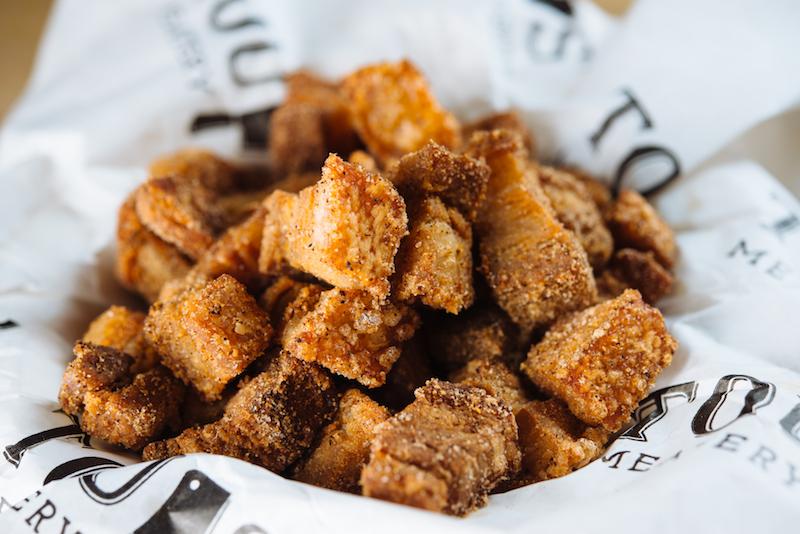Cracklins (Grattons)
Cracklins, also called grattons, are deep-fried chunks of pork belly and skin. But they’re so much more than that. If I could only eat one Cajun food for the rest of my life, it would be cracklins. They are the most unique dish that comes from Cajun culture, and they make me insanely happy. At a boucherie, cracklins are often the first things ready to eat. Once you holler “grattons!” everyone comes running.Sit back, relax, and read this recipe all the way through, because cracklins rely strictly on technique. This is one of the trickiest recipes in this book. My boudin, which has about 20 ingredients and just as many steps, is easier to master. But don’t worry if your cracklins don’t come out perfect. Even a bad cracklin is still pretty damn good. And don’t get too sure of yourself if your first batch does come out right. Perfection boils down to one minute in either direction.






